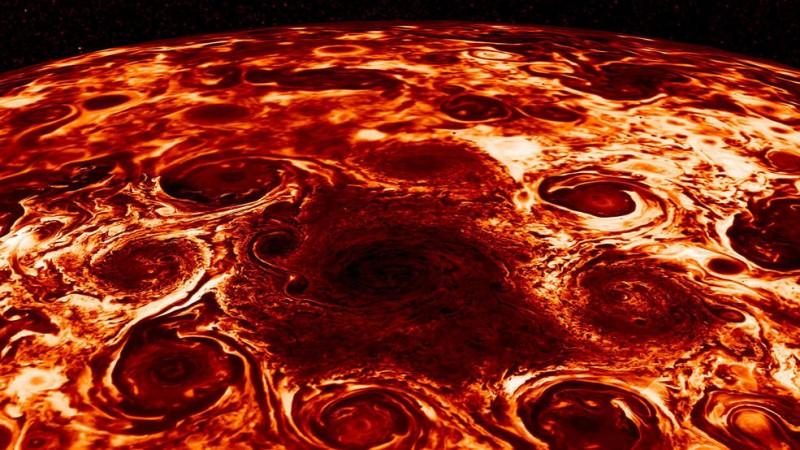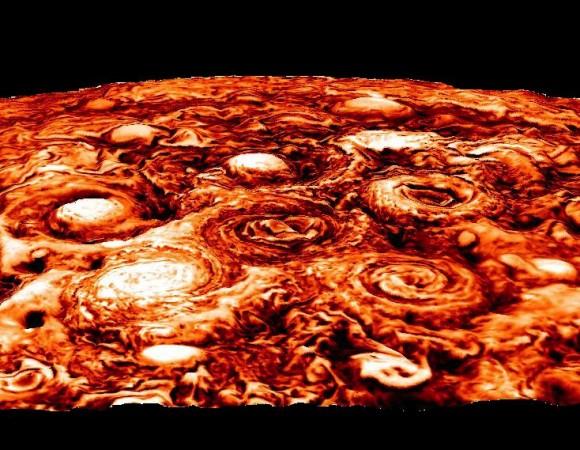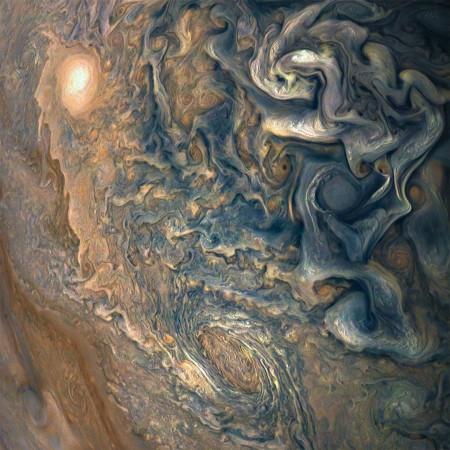
NASA's Juno mission to Jupiter has provided astronomers a lot of new data that can help them better understand the gas giant's interior structure, core mass and its origin. The federal space agency announced on Wednesday that the latest findings had been explained in four research papers that were published in the March 8 edition of the journal Nature.
"These astonishing science results are yet another example of Jupiter's curve balls, and a testimony to the value of exploring the unknown from a new perspective with next-generation instruments," Scott Bolton, principal investigator of Juno from the Southwest Research Institute, San Antonio, said in a statement.
Launched on August 5, 2011, Juno has completed 10 science passes over Jupiter and is going to make the 11th pass on April 1. The spacecraft, which entered Jupiter's orbit on July 4, 2016, has so far traveled nearly 200 million kilometers.
Here're four key findings from NASA's Juno mission to Jupiter:
Measurement of Jupiter's asymmetric gravity field
Gravity measurements collected by Juno during its close flyby of Jupiter have helped scientists determine the depth to which the planet's famous zones and belts can extend. The measurements of the gas giant's gravity field revealed a north-south asymmetry, which is similar to the irregularity observed in its zones and belts.

On a gas planet like Jupiter, such an asymmetry can result only from flows deep within the planet. Since the strength of signals expressed in the gravity field depend on how deep these jets are and how much mass they contain, the degree of the asymmetry in gravity field determines how deep the jet streams expand.
The jet streams extend thousands of kilometers deep
The Juno gravity measurements helped the astronomers determine how deep Jupiter's jets extend and what their structure is underneath the visible clouds. According to the researchers, the observed jet streams can extend down to depths of up to 3,000 kilometers, containing about one percent of Jupiter's mass, or about three Earth masses.
"By contrast, Earth's atmosphere is less than one-millionth of the total mass of Earth," Yohai Kaspi, Juno co-investigator from the Weizmann Institute of Science, Rehovot, Israel, said in the statement. "The fact that Jupiter has such a massive region rotating in separate east-west bands is definitely a surprise."
Jupiter's deep interior rotates like a rigid body
Juno results revealed that beneath its weather layer, Jupiter rotates almost like a rigid body, "with differential rotation decreasing by at least an order of magnitude compared to the atmosphere." Researchers, however, are yet to determine how the transition works between the planet's weather layer and the rigid body below.
"Our results imply that the outer differentially-rotating region should be at least three times deeper in Saturn and shallower in massive giant planets and brown dwarf stars," Tristan Guillot, a Juno co-investigator from the Université Côte d'Azur in Nice, France, and the lead author of the paper on Jupiter's deep interior, said.

Massive cyclones surround Jupiter's poles
The latest results revealed that gigantic cyclones in Jupiter's north and south poles have atmospheric features that are not found anywhere else in the solar system. The planet's north pole contains a central cyclone surrounded by eight circumpolar cyclones with diameters of 4,000-4,600 kilometers.
The south pole also contains a central cyclone, which is surrounded by five cyclones with diameters ranging from 5,600 to 7,000 kilometers in diameter. The scientists, however, are baffled by the fact that these massive cyclones don't merge.
"The manner in which the cyclones persist without merging and the process by which they evolve to their current configuration are unknown," the researchers said.

















